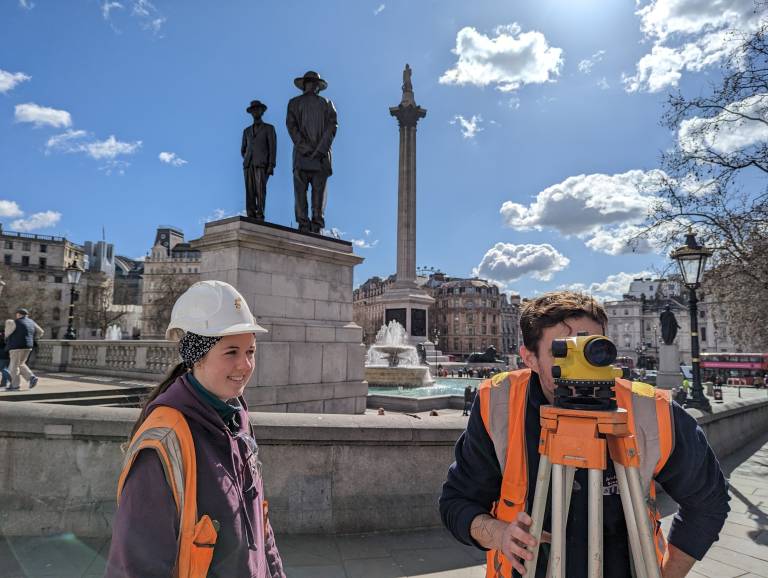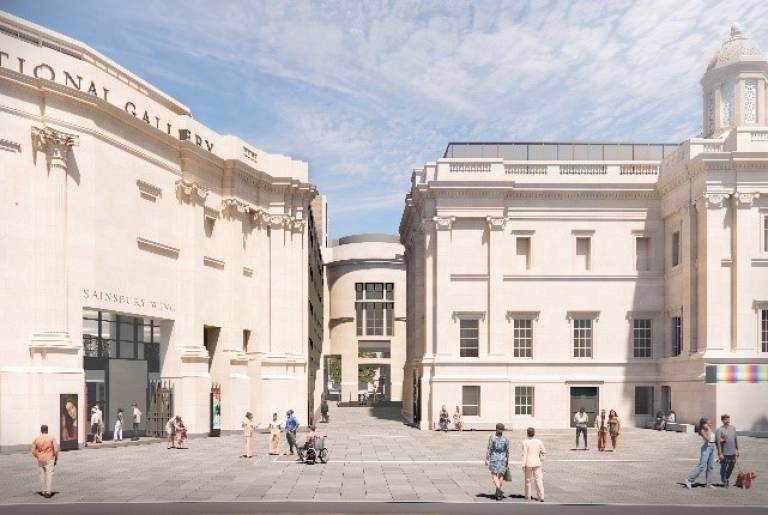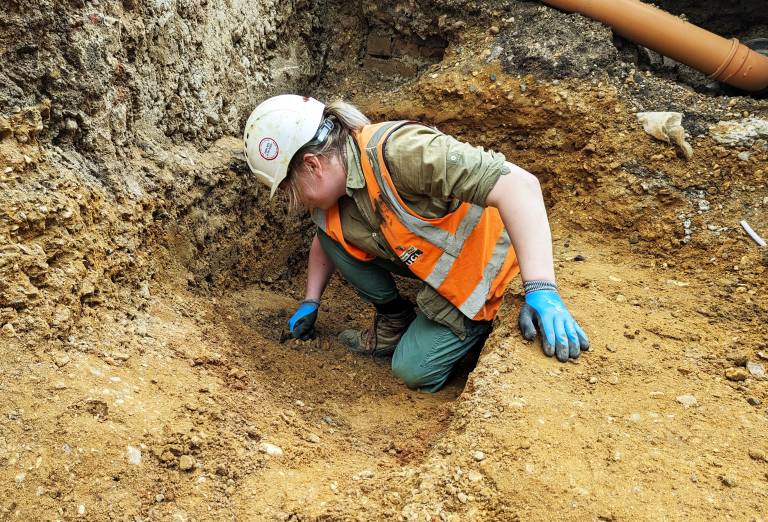Evidence for Saxon London revealed during excavations under the National Gallery
5 February 2024
ASE Archaeologists have confirmed that Saxon London's urban centre extended further west than previously known during excavations at the National Gallery.

Archaeologists from Archaeology South-East, part of the UCL Institute of Archaeology, have released a report from excavations of Jubilee Walk, part of the National Gallery at the North End of Trafalgar Square, detailing findings that show the urban centre of Saxon London extended further west than previously thought.
The excavations were undertaken as part of the National Gallery’s “NG200: Welcome”, a redevelopment project forming part of the Gallery’s Bicentenary celebrations. The National Gallery created Jubilee Walk – a walkway linking Trafalgar Square and Orange Street (for onward access to Leicester Square) - when it built the Sainsbury Wing in 1991. Before this, it was used for a variety of complex purposes, from King Richard II’s Royal Mews for hunting hawks to stables and even a possible row of houses. The area was excavated in preparation for works building a tunnel connecting the Sainsbury Wing to the Wilkins Building, as well as improvements to the public realm surrounding the walkway.

The walled Roman city of Londinium was abandoned by its settlers in the 5th century CE. With the coming of the Saxons the settlement shifted west along the modern area of the Strand. By the 7th century it was known as Lundenwic and was primarily a trading centre with a waterfront. The National Gallery lies to the western end of this settlement; while excavations in the immediate area have found Saxon material previously, this is the first excavation to prove that the urban centre extended this far west.
Archaeologists unearthed a hearth, postholes, stakeholes, pits, ditches and levelling deposits, which initial interpretations suggest represent the reworking of fence lines and evolving property boundaries in this western suburb of Lundenwic. The hearth was radiocarbon dated and revealed a date range between 659-774 AD for the earliest occupation. Above this sequence of Saxon layers were post-medieval walls. The earliest wall was probably built in the 17th or 18th centuries. Archaeologists observed lots of phases of rebuilding of these walls with different building fabrics up until the 19th century.

Stephen White, who led the Jubilee Walk excavations for Archaeology South-East, said, “Excavating at the National Gallery was an incredible opportunity to investigate interesting archaeology and to be involved with some truly outstanding outreach. The evidence we uncovered suggests the urban centre of Lundenwic extends further west than originally thought. This was made all the more exciting by having the chance to share that information, and how it relates to archaeology across London, with young people from this city.”
Sarah Younger, Director of the NG200 Welcome Project, said, “It’s an honour for the National Gallery to be part of a discovery like this, and it brings home to us how everything we are building and re-constructing as part of this project will be part of the fabric and history of London for centuries to come. We are grateful for the hard work and care of the archaeologists who have worked with us over the past months, and, together with our site managers Sir Robert McAlpine LTD, have been bringing groups of students and young people to engage them in archaeology through their work with us. It’s shown to us that the enriching history of the National Gallery does not start and stop at the collection that hangs inside our walls.”
 Close
Close

